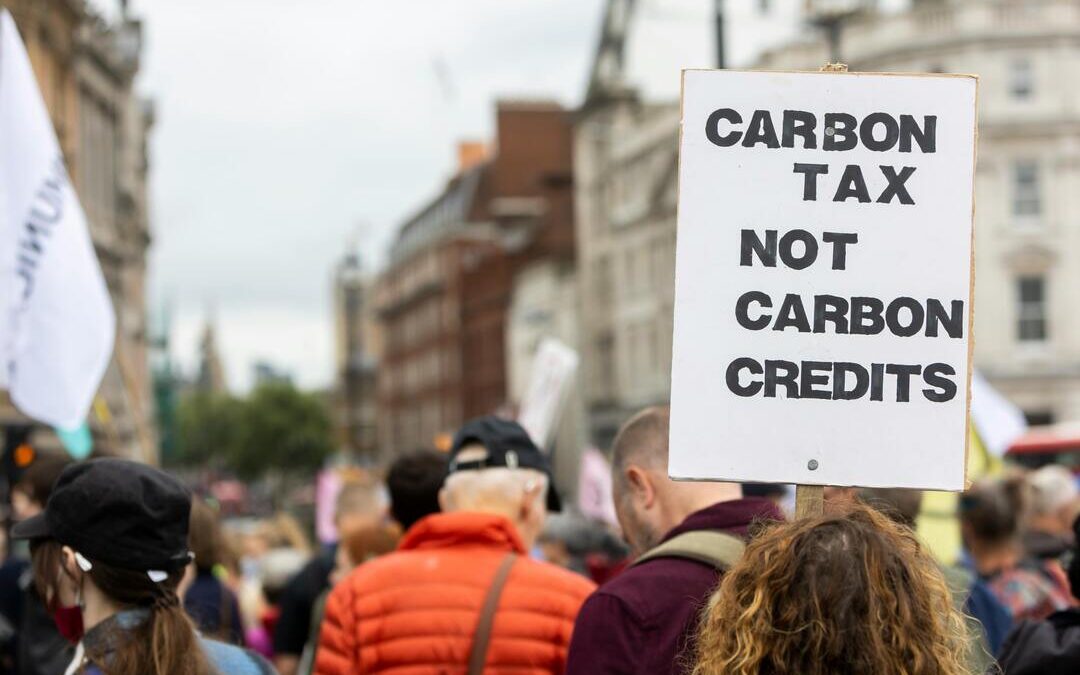India Can Counter EU Carbon Border Tax With Domestic Levy, Study Finds
India can curb EU carbon tariff impact by taxing emissions at home and keeping revenue, the Centre for Social and Economic Progress says.
India could blunt the economic impact of the European Union’s Carbon Border Adjustment Mechanism by introducing a domestic carbon tax at a lower rate and retaining the proceeds, according to new research.
“Retaining carbon tax revenue domestically is crucial to cushioning the economy from the CBAM’s adverse impacts,” lead author Joydeep Ghosh of the Centre for Social and Economic Progress said.
The CBAM, which begins in 2026, will impose tariffs on carbon-intensive imports from countries with weaker climate regulations. For India, the measure primarily targets iron and steel, cement, aluminum and fertilizer.
Iron and Steel Sector Most Exposed
While CBAM-covered exports to the EU account for only 0.2 percent of India’s gross domestic product, the iron and steel sector makes up 90 percent of those shipments, making it especially vulnerable to the new levy.
High logistics costs and competition from cheap imports already weigh on the sector, the study said.
Using a computable general equilibrium model tailored to India’s economy, the researchers found that without a domestic carbon tax, GDP could shrink by as much as 0.03 percent as tariff revenue flows to Brussels instead of New Delhi.
Revenue Recycling Eases the Pain
The report modeled three scenarios. In the “PCARBON” case, India imposes a domestic carbon tax equivalent to the EU price on covered sectors and keeps the proceeds. This could raise revenue equal to about 1 percent of GDP by 2030, which could be used for green subsidies, industrial support and household compensation.
A combined model, “PCARBON + CBAM,” applies both a domestic tax and the EU levy but at half the rate, with revenue shared equally. This would yield about 0.5 percent of GDP in revenue for India and limit GDP losses to near zero by 2030.
By contrast, in the “CBAM” scenario, where the EU collects all tariff revenue, India gains little fiscal benefit. It sees sharper drops in household consumption, particularly in urban areas that rely more heavily on carbon-intensive industries.
Policy Shift Could Support Energy Transition
The report said carbon pricing could accelerate investment in renewable energy and low-emission technologies, offsetting declines in fossil-fuel-based exports. Renewable electricity exports rose in all scenarios, while fossil-based electricity fell.
“The CBAM can be turned into a catalyst for India’s net zero transition if the right domestic measures are in place,” Ghosh said. He pointed to the government’s planned Carbon Credit Trading Scheme as a tool to ease exporters’ compliance costs and generate revenue through auctioned allowances.
Call for Trade Diversification
The authors recommended that India diversify exports toward non-EU markets to reduce dependence on Europe, while negotiating fairer CBAM terms. They also urged policies to boost energy efficiency, cut carbon intensity and provide targeted support for vulnerable industries and households.
The study concluded that the CBAM’s impact on India will hinge on carbon price levels and how revenue is distributed between New Delhi and Brussels. Well-designed domestic policies, it said, could turn the border levy from an economic burden into an opportunity for green transformation.
Nirmal Menon
Related posts

Subscribe
Error: Contact form not found.


